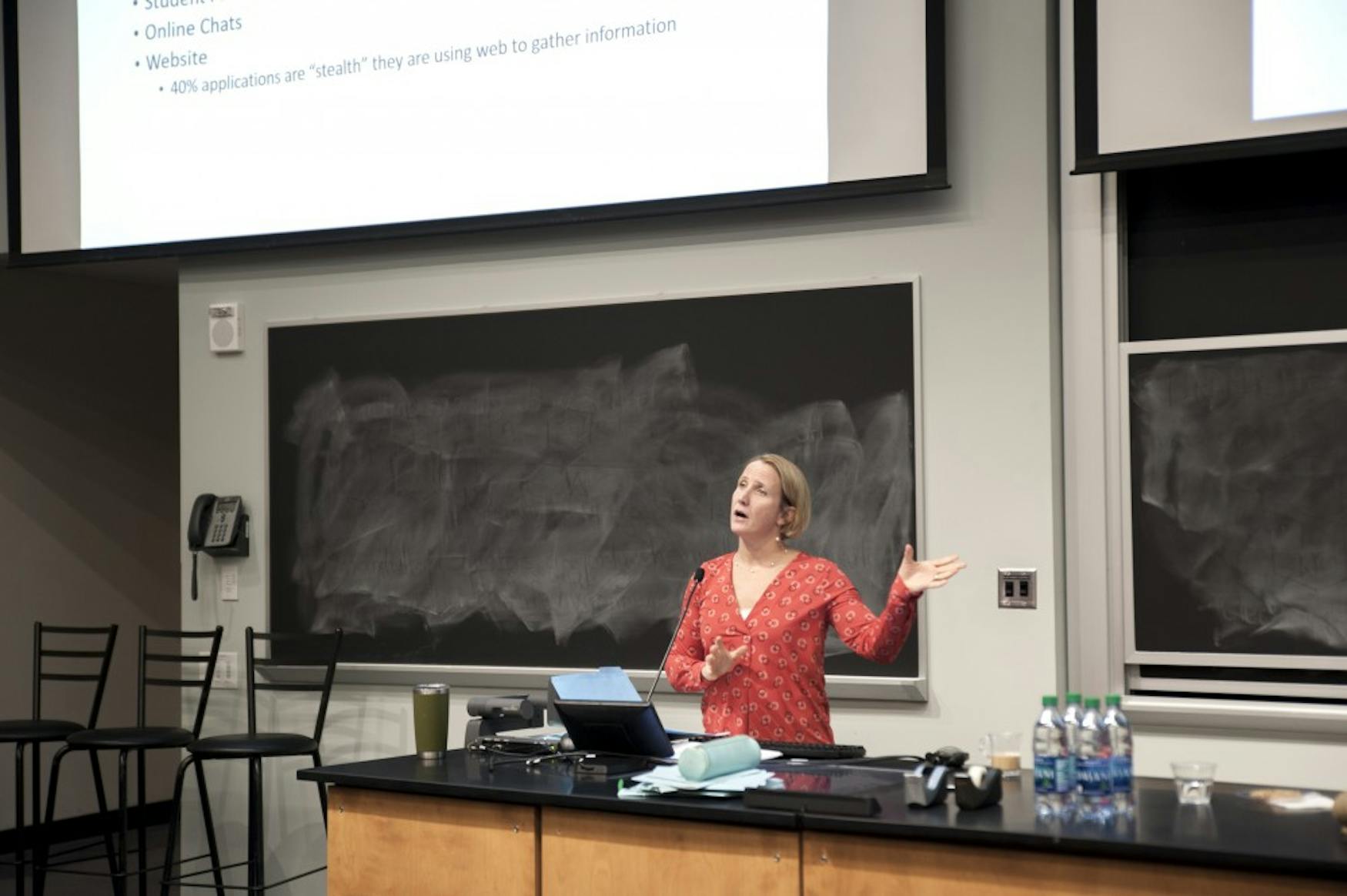Faculty receive snapshot of admissions landscape
Midway through the application cycle for the Class of 2022, the admissions officers are looking to increase face-to-face recruitment tactics in future cycles, Dean of Admissions Jennifer Walker explained at the monthly faculty meeting on Friday.
Walker gave a presentation on enrollment statistics and the recruitment and status of applications for the upcoming year.
“With confidence, 60 percent of our applicant pool is fully admissible — so by the numbers we know they could come here and be successful,” said Walker, who spoke of the University as a top tier school, albeit one facing a “very saturated market here” in the college-dense Boston area.
“I and my team at admissions are largely focused on identifying students who want to be here, who seem like the best fit for our community … those that seem to identify as someone who will make contributions to your classroom experience,” Walker said.
Although the Admissions Office is not yet through the current application cycle, Walker gave an overview of Class of 2021 demographics.
Compared to the prior year, Class of 2021 applications were up by 3.3 percent as a whole, however the rate of international applications up 4.1 percent higher than domestic applications, at 2.5 percent — an ongoing trend, said Walker. She added that 4,010 students were admitted from the applicant pool and that notably, 35 percent of the class applied early decision, the binding agreement that identifies a college as the first choice for the student.
Sharing a snapshot of Class of 2021 demographics, Walker highlighted several key statistics. International students make up 19 percent of the class, which is in range of the University’s ideal of 20 percent or less, and 73 percent came from outside New England, which is consistent with years past.
Of the domestic students, 30 percent identify as non-white, and of that, underrepresented minorities represent 15 percent. In addition, after subtracting the international student population, 49 percent of the class identify as white. Walker also added that 14 percent of the class is made up of first generation college students and 17 percent of the class is Pell Grant Program eligible, or part of the low-income bracket eligible for non-repayable federal aid.
In regards to the ongoing application cycle, Walker said that Admissions has worked to increase its face-to-face recruitment, traditional marketing and communications with prospective students. High school students today want colleges to “market specifically to them,” she said.
A faculty member asked what is taken into consideration when determining the “fit” Walker mentioned, followed with, “What is the ‘Brandeis Culture?’”
Reflecting on the difficulty of answering that question, Walker said, “I wish I could give you a blanket statement,” but she noted that a clear passion for learning was common. She gave an anecdote about an applicant who — in response to a prompt “What can you speak hours and hours about” — wrote an entire application essay on gerund phrases, or ‘-ing words,’ inciting laughs from the faculty. “I was sure he was going to find his place here,” Walker said.
University President Ron Liebowitz was absent from the meeting and Provost Lisa Lynch provided his notes to the faculty. Liebowitz asked faculty to contribute to his “strategic thoughts” discussion on the future of the University and also mentioned that the monthly Board of Trustees meeting will take place today and tomorrow.
The Board will meet with faculty, staff and students involved in the two resolutions passed by the faculty last fall: faculty and staff retiring contributions and divestment of the University’s endowment portfolio of fossil fuels. The Board will also meet with a student panel with a “strong desire from board members to hear about the challenges students faces on campus.”
The Board’s academic committee will have a discussion among themselves and with the Board at large to consider the general education proposal passed by faculty in November 2017.
The Board will also meet with 15 faculty members who have been hired in the last four to five years, in order to hear about their faculty and teaching experiences and challenges, as well as what drew them to the University.
Lynch concluded the meeting by sharing a list of goals for 2018 from the Provost’s Office. Pertaining directly to students, the goals included getting a better understanding of student life from undergraduate and graduate students and promoting faculty awareness on student mental health issues, given the increased demand at the Brandeis Counseling Center last semester.



Please note All comments are eligible for publication in The Justice.